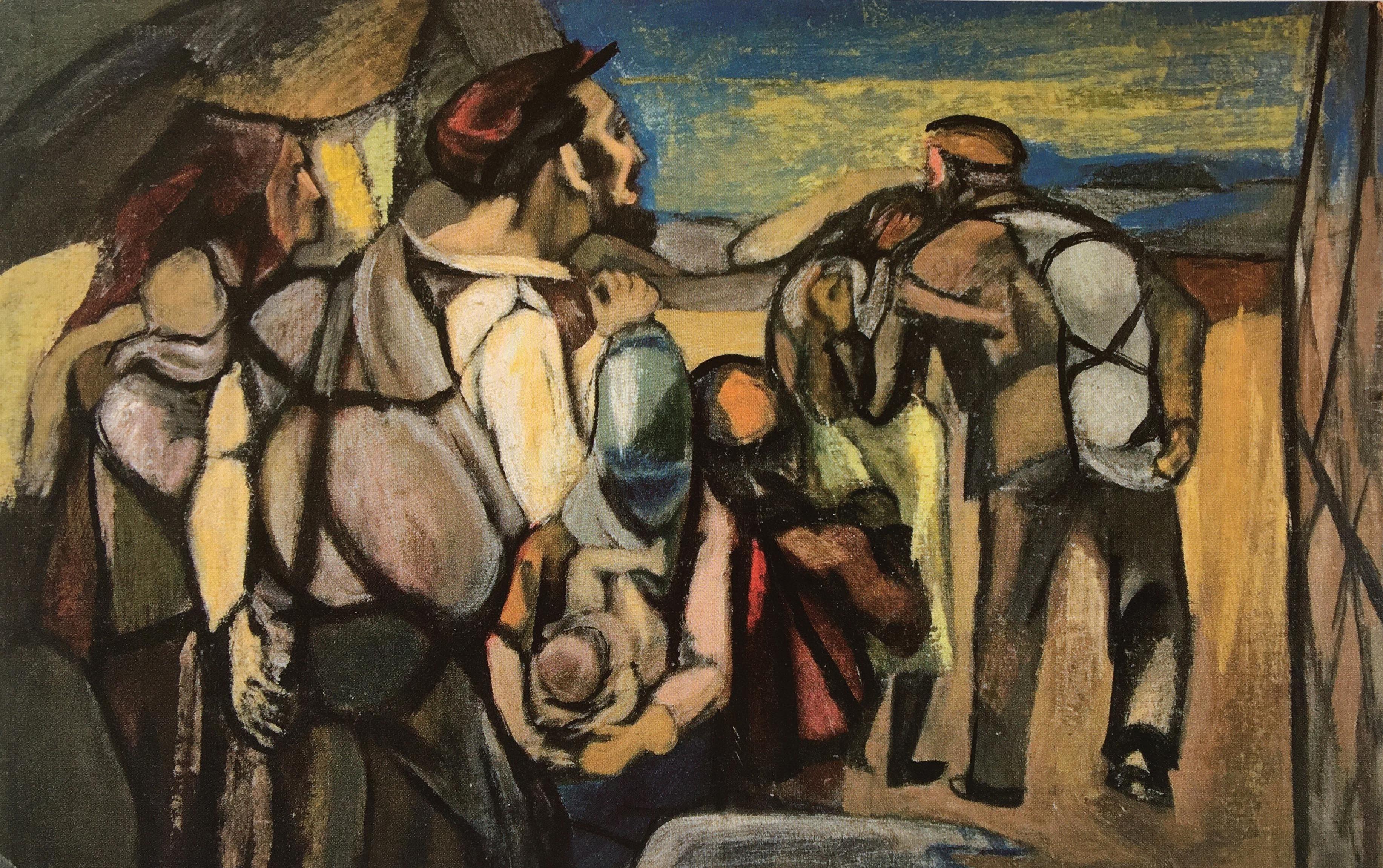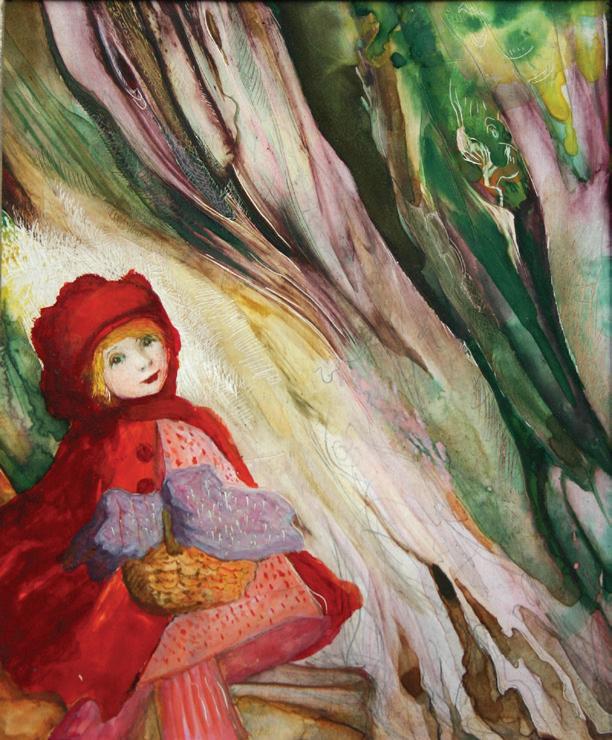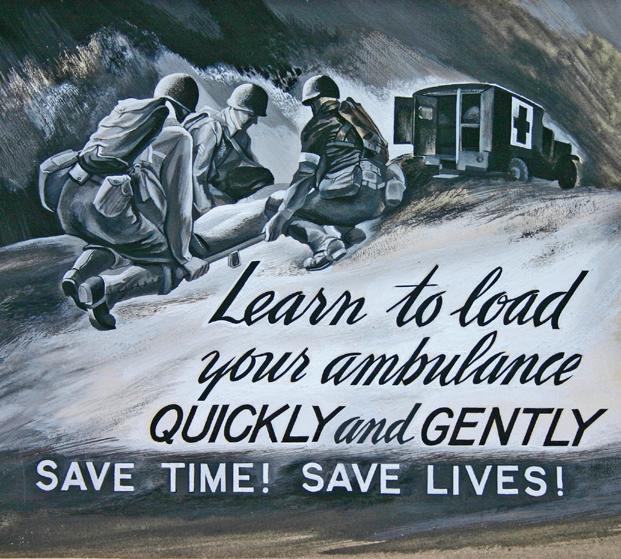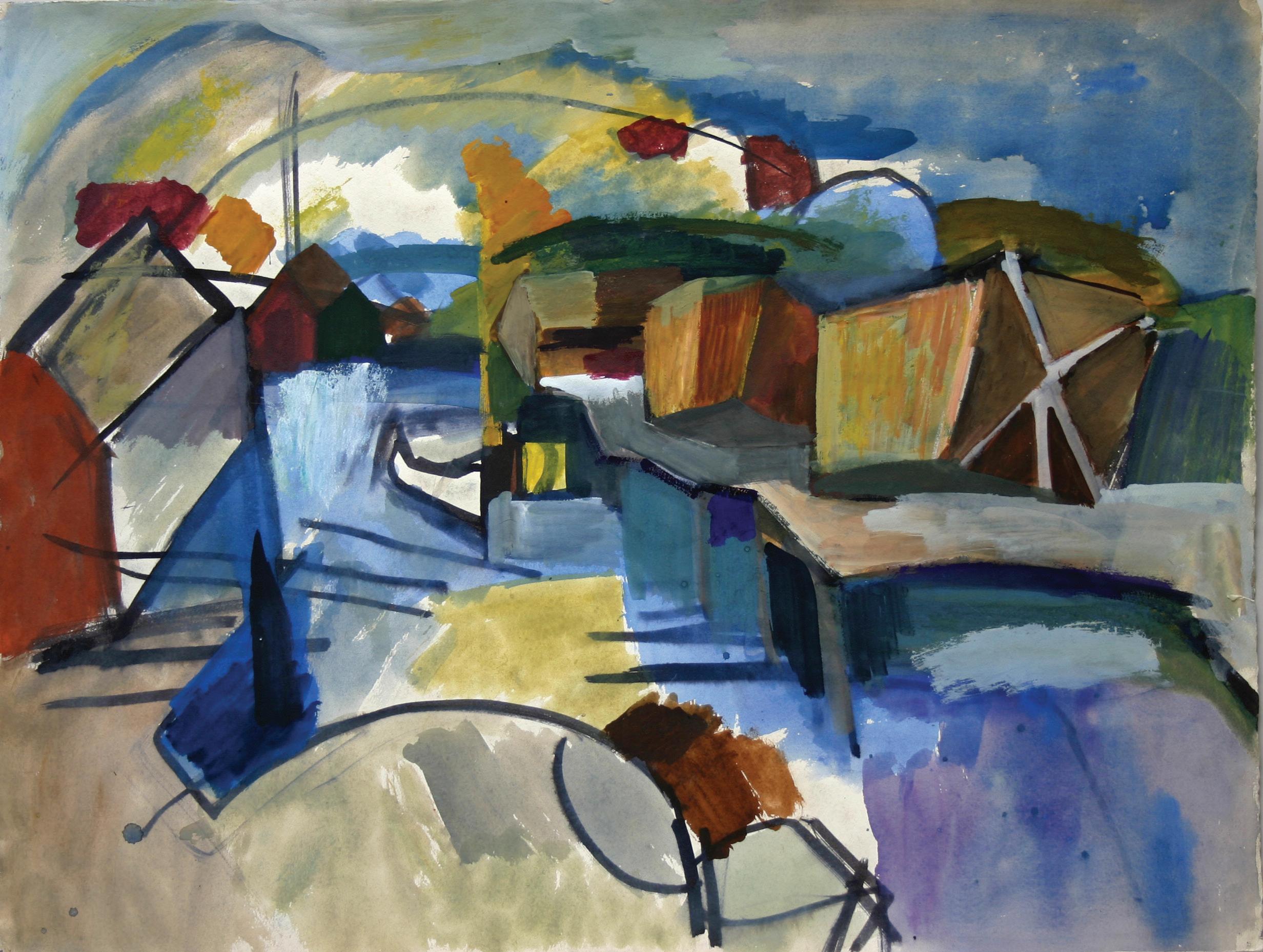
10 minute read
Sam Feinstein: The Early Years from the 1920s–1950s
Immigrants, c. 1930
SAM FEINSTEIN: THE EARLY YEARS 1920S–1950S
Advertisement
Samuel L. Feinstein, accompanied by his parents and extended family, sailed into New York City Harbor on April 19, 1922. It took two long years for them to flee religious persecution during the Russian Revolution. They journeyed from Romania to England where they boarded the RMS Olympic to cross the Atlantic. Their voyage was riddled with peril and hardship, which Sam would never forget.
The family moved to Philadelphia and eventually settled in what was then a very poor area of the city, near Pine and Fourth Streets. Sam was eight when he started 1st grade. A year or two later, he began helping his father with the financial details of his fruit-market business. His religious education consisted of completing his studies of the Torah and becoming a Bar Mitzvah, but for him the path to his lifelong spiritual growth was his strong commitment to, and love of, art.
“For me, painting has become a stubborn necessity, a reason for existing.”~ Sam Feinstein
Sam benefited from his high school years at Philadelphia’s very prestigious Boys Central High School, which offered a rich curriculum in languages, history, literature, poetry, music, art, and drama, taught by extraordinary scholars seeking employment during the Depression. Sam was popular and wellknown for his artistic abilities, his realistic style, and his sharp eye for detail.
In 1932 Sam graduated at the top of his class from Boys Central High School and, to the dismay of his parents, declined a scholarship to the University of Pennsylvania, accepting instead an art scholarship at the Pennsylvania Museum School of Industrial Art, now known as The University of the Arts.
At the Museum School, drawing techniques were of primary importance and emphasized structure. However, Sam had a keen, sensitive eye for color as seen in his 1940s illustrations of Little Red Riding Hood, Rip van Winkle, and Aladdin and His Magic Lamp. It
was during his second year at university, while painting the massive

jagged cliffs and vast ocean on the Gaspe’ Peninsula in Quebec, that he realized that the traditional academic realism he was taught was not doing justice to the power he was experiencing from nature. and he started making distortions without really knowing why.
Little Red Riding Hood, c. 1934 “What are nature’s laws? How specifically, do they
operate?” ~ Sam Feinstein
This marked the beginning of a shift in his style, which came with pushback from his educators. This shift is evident in his watercolor scenes, such as MarketAM and Factories (p. 25), where the forms of the buildings soften by his use of color that flows in and out of one another while still keeping the crispness of some tiny details.

Market AM, c. 1930
Sam’s exceptional talent and skill won him many awards, including the prize for painting in his final year. At the age of 20, urged by his teacher and mentor Franklin Watkins, he submitted two portraits for the Philadelphia Sketch Club’s 72nd Annual Exhibition and won the Medal of Honor for his Portrait of Mrs. W. Following his graduation with honors in 1936, Sam was given his first one-man show at the Philadelphia Art Alliance.
After graduation, Sam struggled to support himself as a teacher and commercial artist. He taught

painting at the Museum School and printmaking at the Philadelphia Print Club. In 1938 Sam became the head of the Art Department at Chestnut Hill Academy (CHA), the boys’ school of what is now Springside Chestnut Hill Academy (SCH). His reputation was that of an innovative and insightful teacher.
Aladdin and His Magic Lamp, c. 1934
“I am definitely opposed to combatant services. This belief is based upon deep convictions growing out of my study and practice of art, with its fundamental philosophy of beauty, construction and order, as against any form of destruction,

especially that of man by man.”
~ Sam Feinstein
Sam’s application for conscientious objector status

Detail, Worry, 1940

Detail of Rest in Pieces, 1945

Terror, c. 1942

Loading Ambulance, 1943
In 1942 Sam enlisted in the army and married Barbara Anne Crawford, whom he had met at the Pennsylvania Museum School of Industrial Art. Crawford eventually took over his teaching and leadership post at CHA where she remained for nearly 50 years. Barbara was married to Sam for almost two decades, and the two remained friends and painted together for the rest of their lives. His style by then was distinctly expressionistic and conveyed a sense of anxiety and fear as the threat of war became imminent. This is depicted in his work, Terror, where a man is seen screaming in horror.
Sam struggled with the idea of war and applied for conscientious objector status. His request was denied and Sam went on to secure a position in the 603rd Engineer Camouflage Battalion by studying all he could find about camouflage, as well as staging a camouflage exhibit at the Franklin Institute. The lack of creativity involved with this type of work was frustrating him, so he convinced the army that he was better suited for pictorial work, such as creating posters and animations. He was then moved to the Pictorial Services Division in the Medical Field Services School where he created a series of posters. His illustrations were dramatic; he played with scale and exaggerated perspective to intensify his message, as seen in Loading Ambulance. In 1944 he won first place in an army poster contest and Rest in Pieces (p. 4) became the front cover of the V-E Day edition of The Medical Soldier newspaper. In 1945 Sam was honorably discharged from the army and for one year taught art history at Springside School, the sister school to CHA.
Sam’s challenge in the 1940s was finding time to paint because he also needed to earn a living. After his discharge from the army he began working for the documentary film company, Philip Ragan Associates, Inc., and it was in the late 40s that he created the short documentary One World or None,

Harbor, 1947
commisioned by the United Nations, about the splitting of the atom and demonstrating the destructive force of atomic missiles. Sam researched University of Pennsylvania notes and archives to get the information to make the film. The documentary became a classic, and it is still shown by educators today.
In 1947 Sam went on to teach at the Philadelphia Museum of Art and became known in the region for his paintings, writings, and lectures. E.M. Benson, Sam’s supervisor, asked him to make a movie about his former mentor, Franklin Watkins. There was no script so Sam had to compose the narrative, direct, and film the movie.
Sam moved to New York in the fall of 1947 in order to make a living and pursue his true love, painting. In his first two years he was an art director for the graphics houses Murphy-Lillis, Inc. and Frederic House, Inc., then went to work for Caravel Films. During the late 1940s and early ‘50s Sam found joy in the time he spent in Provincetown, Massachusetts, on Cape Cod, where he immersed himself in painting in a place where Winslow Homer, Edward Hopper, John Marin, Stuart Davis, and Hans Hofmann also created work. His search for abstraction is evident in Harbor, Still Life, and Untitled, c. 1949, where geometric abstraction is influenced by Picasso’s synthetic cubism.
Still Life, late 1940s


Untitled, c. 1949

Hans Hofmann in his studio in 1951, photographed by Sam.

Untitled, 1952
Sam was re-energized when he met and began studying with Hans Hofmann in 1949 and decided to become a full-time freelance artist. Hofmann, born in 1880 in Germany, had studied art in Paris and had met Matisse, Picasso, Braque, and Robert Delauney. He brought firsthand knowledge of Fauvism and Cubism styles already established in Europe, and became known in America as the art teacher of the 20th century. Sam’s interest in the abstract form evolved through Hofmann’s teachings. In Hofmann’s class, Sam’s drawings became far more geometric than his previous works. Paintings that were inspired by a live model, like Untitled, 1952, with angled shards and lush surfaces of paint, merely suggested the presence of a figure as Sam continued to explore the relationship between geometry and art.
In 1950 Sam began work on a black-and-white documentary film about Hofmann, his teachings, his creative process, and his daily life. The film took him decades to complete. Sam captured the intense vitality of the artist as he immersed himself in the act of painting The Window, 1950. He clearly explains Hofmann’s artistic philosophy and how the artist saw energy and movement in the forms he was creating. This work was acquired and then donated by Mr. and Mrs. Roy Neuberger to the Metropolitan Museum of Art in 1951. In 1964 Hofmann approved Sam’s script and was very pleased. Hans Hofmann, considered a classic art film of the 1950s, finally premiered to a full audience at the Metropolitan Museum of Art on Octover 8, 1999, 33 years after Hofmann’s death. During these years, the two artists became friends, sharing a common passion for the philosophical pursuit of art and developing a deep respect for one another. The two spent time listening to music, talking, going to parties, and sharing family picnics on the beach. They painted together in Provincetown and New York, and Hofmann
Detail of Untitled, c. 1952 found on the back cover offered Sam a teaching post at Hofmann’s school in Provincetown, which Sam declined to accept because of an already full schedule.
It was in the early 1950s that Sam won honors for two of his woodblock prints, Black Walnuts and Wharf’s End, which were later acquired by the Philadelphia Art Museum. During this same time, Sam helped Hofmann craft the precise language for his essay, “The Color Problem in Pure Painting: Its Creative Origin.” Sam was the one who could truly decipher Hofmann’s meaning and could clearly communicate what the master was trying to say. In 1954 Hofmann dedicated his final draft to Sam.
Influenced by Hofmann as well as other painters, Sam continued exploring abstract forms, complexity, and moods of color with swirling forms or straight-edge shapes as seen in Untitled, c. 1952. He would start painting with no preconceived idea of what would happen on the canvas, adding paint and growing with the work, reconnecting with the laws of nature and light, giving the painting energy.
“Painting deals essentially with light in order to produce form that can move the spectator.” - Sam Feinstein
A painting could be soft or bold like music, each piece of color a note; and music in turn, was like a painting. With a constant thirst for knowledge and answers to his existential question of what art is, Sam and his friend, architect Louis Kahn, formed Group 55. This collection of Philadelphia-based artists organized panel discussions on contemporary creative problems. Sam was the president of the group during the three years they were together.
“There is no difference between an abstract picture and a realistic one...everything is, in the end, energy...movement...any form that you’re looking at is made up of electrons…energy.” - Sam Feinstein
Feinstein continued to teach until his passing in 2003, his style evolving to what he and Hofmann called “plasticity”—the invisible thrust of energy that propels life—producing later works such as Rising (p. 21 and 27). He encouraged his students to create what he called “a wild one” as described by Bonnie Warwick in her recollection of Sam (p. 15)
Pia Druggan, P ‘17
Co-Curator
Untitled, mid 1950s

The above text was inspired by Patricia Stark Feinstein’s book, Sam Feinstein, Fields Publishing, 2008. The Sam Feinstein quotes have been taken directly from the book. All images are courtesy of the Samuel L. Feinstein Trust.



